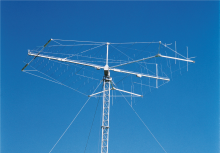The Rebirth of HF
The Rebirth of HF

Much of HamSCI research looks at communications in the High Frequency (HF, 3-30 MHz) radio bands. The HF bands allow for both global communications and techniques for remote sensing the ionosphere and space. The HF bands have seen a resurgence in recent years, as new modulation techniques are developed and people realize the importance of diversifying their communications infrastructure. Paul Denisowski, KO4LZ, engineer for Rohde & Schwarz North America recently wrote a white paper entitled, "The Rebirth of HF".
From the paper:
"HF stands for ‘high frequency’ and is usually used to refer to signals with frequencies in the range of 3 MHz to 30 MHz, although in many cases the practical definition of HF has be extended down to frequencies as low as 1.5 MHz. HF is also sometimes referred to, somewhat loosely, as ‘shortwave,’ especially in the context of broadcasting. These HF frequencies correspond to wavelengths in the range of approximately 10 to 100 meters. Given that modern homes contain Wi-Fi access points operating in the gigahertz range and that some 5G deployments are taking place in so-called millimeter-wave bands, the names “high” frequency and "shortwave" may seem a bit misplaced, but it is worth nothing that the first experiments in long-distance radio communication by Marconi around the year 1900 used even lower frequency signals.
One of the best-known applications of HF is worldwide or global communications. Both government and commercial broadcasters can reach listeners worldwide using HF frequencies. This global reach is also extremely useful in many government and military applications, and HF is used extensively by amateur radio operators around the world. This paper will begin with an exploration of the unique properties of HF that enable global communications."
This paper does a good job of outlining many of the fundamentals concerning HF radio and the ionosphere and serves as a good tutorial for introducing some the things that HamSCI studies. This paper is made available here with permission from Dr. Ulrich Rohde, N1UL.
Also available is a presentation by Dr. Rohde on Emerging Trend in 5G, IoT and SDR.
